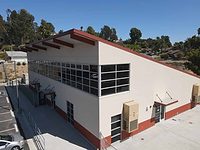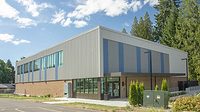Project Profile: Big Span Structures Outfits PGA Tour Headquarters with ETFE Skylights

SUMMERFIELD, Fla. — Big Span Structures, a leader in concept-to-completion solutions for signature lightweight tensile membrane structures, completed an ETFE skylight installation on the roof of the new PGA Tour headquarters in Ponte Vedra Beach, Fla.
The project consists of a two-layer ETFE application, known as a cushion system, where a pneumatic system maintains air between the layers of film that are attached in aluminum extrusions. The ETFE installation includes a total of five skylights, each consisting of five cushions or 25 cushions total, covering a combined 7,300-square-feet. The film features a printed frit pattern to help with solar control and shading into the building space below. Big Span’s ETFE skylights are a highly transparent material — up to 90-95% — providing an aesthetic and sustainable solution that fills the PGA headquarters with natural light while helping its pursuit of LEED Gold certification.
Designed by Foster + Partners Architectural Design and Engineering Firm and working closely with general contractor Clark Construction, Big Span’s unique skylight solutions contribute to the overall aesthetic of the PGA’s new headquarters, as its 187,000-square-foot building is surrounded by a freshwater lake. Upon its completion at the end of this year, the building will house more than 750 employees that currently occupy 17 buildings scattered throughout the area.
“The PGA Tour is one of the finest sports organizations in the world, and it wanted a headquarters that reflected its commitment to excellence,” said Michele Taylor, business development manager, Big Span Structures. “Big Span is proud to equip the new facility with ETFE skylights that help to brighten the workday for hundreds of employees.”
ETFE film is extremely durable, totally transparent, fully color printable and considered lighter in weight than glass structures. ETFE can be constructed in either single or multiple-layered applications. The film is UV transparent so exposure to UV will not discolor or structurally weaken the film. Lastly, due to the inert nature of its surface, it resists adhesion of airborne pollutants, dust, dirt and chemicals.
Looking for a reprint of this article?
From high-res PDFs to custom plaques, order your copy today!





